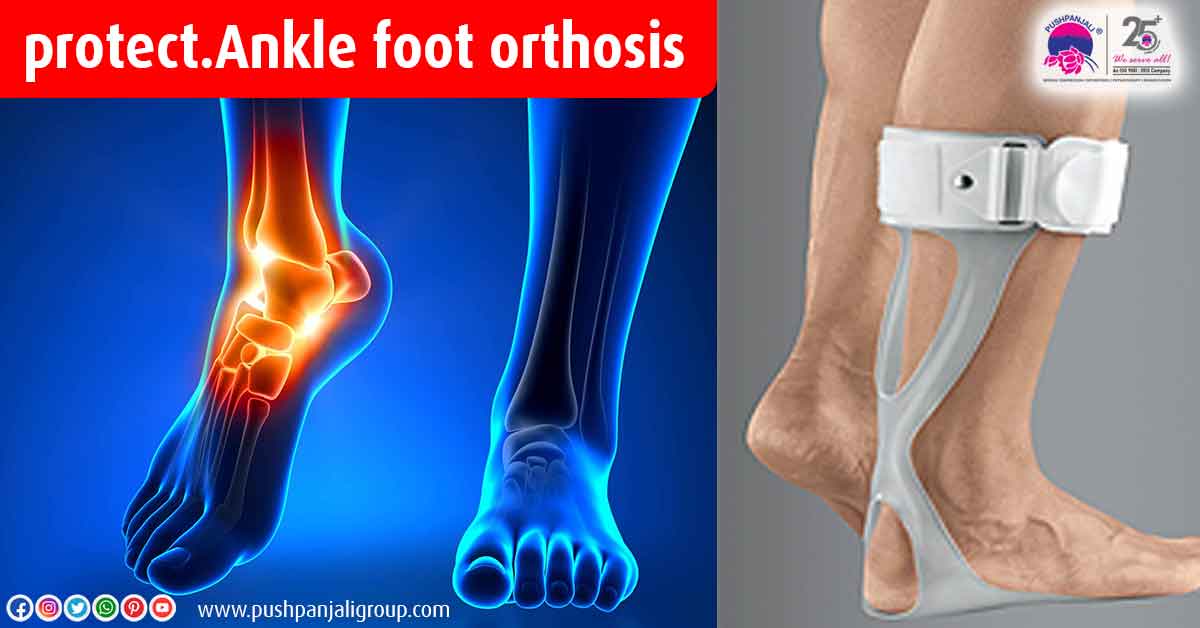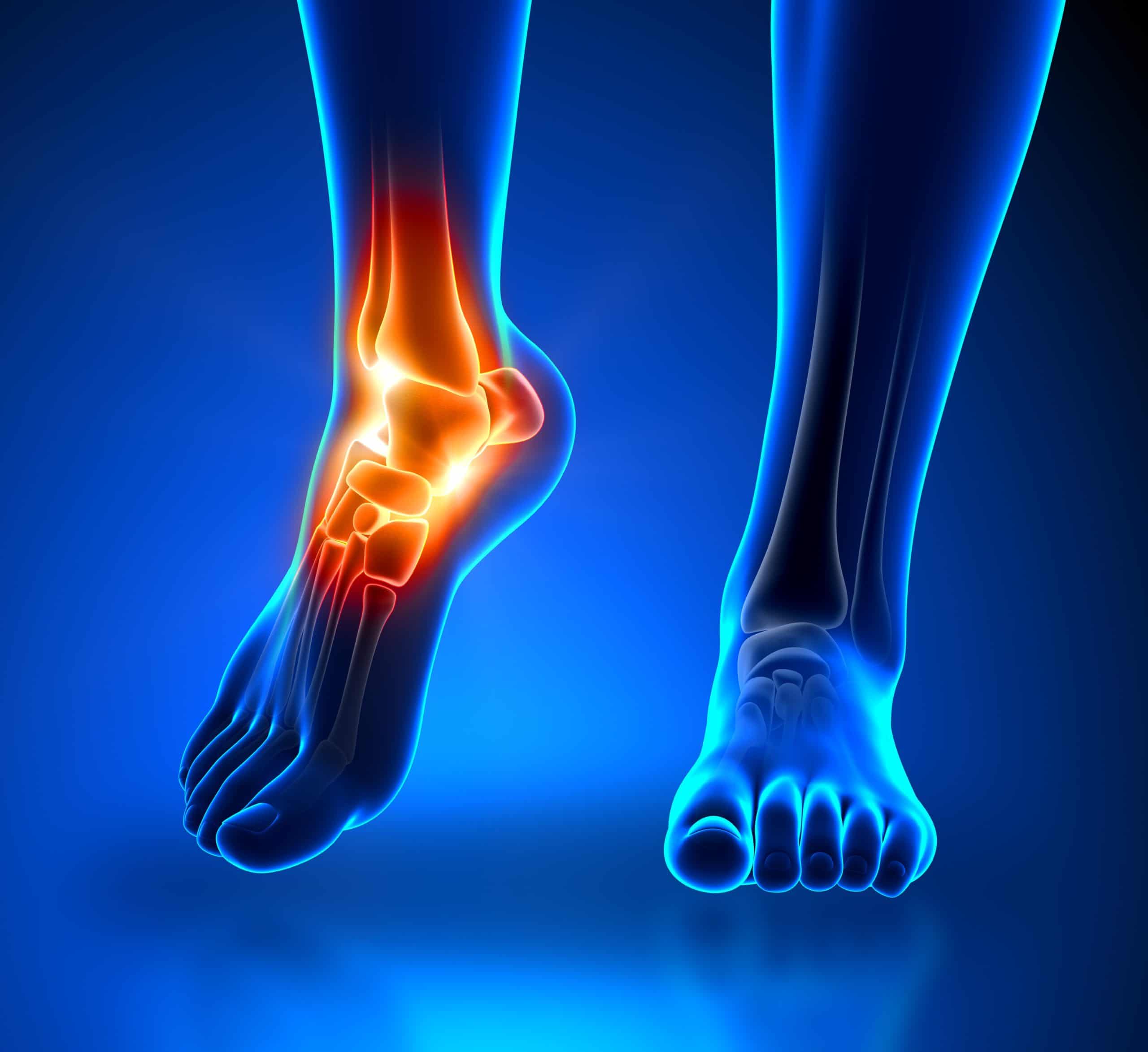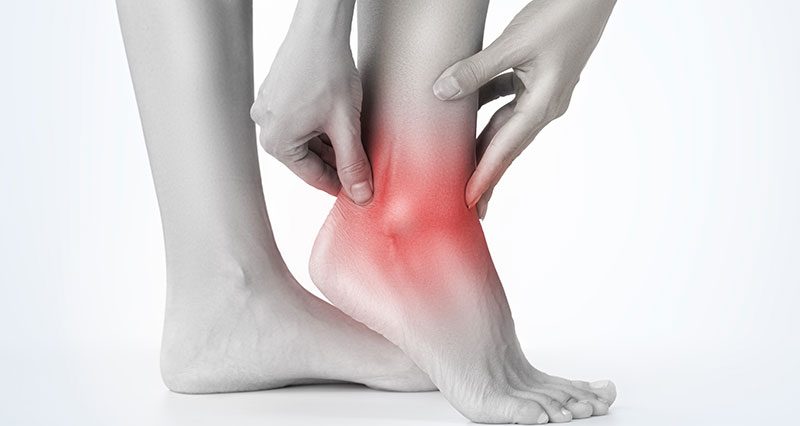The risks of foot drag and foot drop and effective treatment with an ankle orthosis

The risks of foot drag and foot drop and effective treatment with an ankle orthosis
It is quite amazing to know that one of the remarkable features of the human body is the ability to heal on its’ own after an ankle ligament injury, ankle sprain or strain, or any other known causes. If you break a bone or suffer a cut for various reasons, it will eventually be patched up or rather healed by itself.
Your ankle is composed of three bones namely Tibia, Fibula & Talus. The talus sits above the heel bone and supports the tibia & the fibula i.e. the thinner bone found next to the tibia. All the bones are held in place by several ligaments that surround the ankle joints – both the ankle and subtalar joints and bind the bones together. It is quite essential to understand how #Ankle instability is related to sprains and strains.
Foot drop also called drop foot or dropped foot is the complete inability to raise the front of the foot due to weakness or paralysis of the muscles and nerves that lift the foot. Foot drop as the name suggests is not a disease in itself. Rather it is a symptom of a greater problem or medical condition.
You can easily recognize foot drop by how it affects your gait pattern. Some patients with foot drop conditions may drag their foot along the ground while walking because they can’t lift the foot with every step. In order to avoid dragging their toes or tripping, they might lift their knee at a higher level or swing their leg in a wide arc pattern. This is termed steppage gait and is sometimes referred to as a coping mechanism for foot drop issues.
There are various causes of foot drop. Broadly speaking there are 3 main factors or causes of the weakening of muscles that lead to foot drop.
Nerve injury – The peroneal nerve is the main nerve that communicates the muscles that lift the foot. Damage to the peroneal nerve is the most common cause of foot drop. The peroneal nerve wraps from the back of the knee to the front of the shin and sits close to the surface, making it highly susceptible to damage of the foot. Damage to the peroneal nerve is mainly caused by athletics & high-action sports injuries, hip or knee replacement surgery, a leg cast, childbirth or even crossing your legs while sitting.
Muscle Disorders – Muscle disorders are a condition that gradually causes the muscles to slowly weaken or deteriorate and further contribute to the principal cause of foot drop. Muscle disorders mainly include Muscular Dystrophy, Amyotrophic Lateral Sclerosis, and Polio.
Brain or Spinal Disorders – It is of paramount importance to learn that Neurological conditions can also cause foot drop. Conditions of foot drop generally include stroke, multiple sclerosis (MS), and Cerebral palsy.
So how foot drop and foot drag are treated is a question among patients suffering from this condition.
Treatment of foot drop & foot drag requires the treatment of the underlying medical condition that caused it. In some specific cases, foot drop is permanent and no known cure or remedy is present. In other cases, many patients show significant improvement in the treatment procedure.
Physical Therapy – Upon a visit to your orthopedic surgeon, he will check the condition of the foot, monitor your gait pattern, and recommend a series of routine tests to detect the condition of the bones, joints, and any possible cause of injury. He will suggest physical therapy that includes strengthening of the foot, ankle, and lower leg muscles which are considered the primary treatment method which will be prescribed for the underlying condition in addition to prescriptive medications.
Rehabilitation Exercises – Specific range of exercises that strengthen the muscles of the foot, ankle and lower leg help improve the symptoms of foot drop/drag in some specific cases. Exercises are very vital for the improvement of Range Of Motion, strengthening of joints, muscles, balance, and significant gait patterns,s and further preventing muscle stiffness. At the instruction of your orthopedic surgeon, your physical therapist will guide you step by step process in the strengthening of your leg, ankle, and foot muscles which are absolutely necessary for faster recovery. Rehabilitation of foot drop is a long drawn process and therefore your physical therapist will likely recommend you continue doing the exercises from home for the strengthening of joints and muscles.
By being consistent at home in doing the physical rehabilitation exercises on regular basis chances are you can maximize the rate of recovery from foot drop condition.
Ankle Bracing or use of Ankle Foot Orthosis (AFO) – Your surgeon will recommend the usage of an Ankle brace or Ankle foot orthosis that supports the foot, and stabilizes the joint in a normal position. The orthosis will stabilize your foot and ankle and secure to hold the front part of the foot up while walking. Traditionally doctors used to recommend and prescribe heavy bulky splints that used to go inside the shoe, but with the advancement of technology, doctors are now recommending the usage of ankle brace or AFO.

This golden advice is to be followed by you as directed by your physician. Treatment for foot drops besides surgery includes conservative measures such as physical therapy, medications, and usage of ankle braces as directed by your physician and discussed above.
On seeking consultation with your physician, he will freely discuss at length on nature of the problem of your foot, check your gait, take details of your family history and diagnose the foot problem through a series of routine tests like X-RAY, MRI scan to help ascertain any visible sign of injury & fractures and the condition of the foot. Generally, treatment includes rehabilitation & physiotherapy which are the principal tenets of treatment modalities available. Physical therapy includes different types of exercises & massaging techniques that are effective in treating the problem. Further, the treatment procedure adopted under the guidance of a trained physiotherapist is quite simple and effective in the long run by using a functional ankle brace or AFO as recommended by your orthopedic surgeon. You need to rest your foot & ankle as much as possible until full recovery and avoid excessive pressure on the ankle joint. Your doctor will advise you to avoid or modify activities that increase the pain, such as climbing stairs too often, kneeling, or squatting. You should therefore opt for an ankle orthosis that supports stabilization of the ankle joint and further prevents your foot from tipping down.

To further explore in detail a broad range of exclusive products covering treatment for foot drop due to peroneal paralysis & foot drag due to hemiplegia, it is to be noted that PMIPL has earned a significant reputation in healthcare & wellness to stand apart as the sole Importer & Distributor of reputed orthopedic products offering a wide variety of choices easily accessible across Rehab clinic, wellness chains, Reputed pharmacies, and major Distributors & Suppliers for your tailored needs. With a strong PAN India presence and its’ Head Office ideally located at the heart of KOLKATA covering a major dealer strength of 400+ and a wide network comprising 140+ cities, kindly follow the link @ https://shop-pushpanjali.com/product/protect-ankle-foot-orthosis/
It is quite amazing to know that one of the remarkable features of the human body is the ability to heal on its’ own after an ankle ligament injury, ankle sprain or strain, or any other known causes. If you break a bone or suffer a cut for various reasons, it will eventually be patched up or rather healed by itself.
Your ankle is composed of three bones namely Tibia, Fibula & Talus. The talus sits above the heel bone and supports the tibia & the fibula i.e. the thinner bone found next to the tibia. All the bones are held in place by several ligaments that surround the ankle joints – both the ankle and subtalar joints and bind the bones together. It is quite essential to understand how #Ankle instability is related to sprains and strains.
Foot drop also called drop foot or dropped foot is the complete inability to raise the front of the foot due to weakness or paralysis of the muscles and nerves that lift the foot. Foot drop as the name suggests is not a disease in itself. Rather it is a symptom of a greater problem or medical condition.
You can easily recognize foot drop by how it affects your gait pattern. Some patients with foot drop conditions may drag their foot along the ground while walking because they can’t lift the foot with every step. In order to avoid dragging their toes or tripping, they might lift their knee at a higher level or swing their leg in a wide arc pattern. This is termed steppage gait and is sometimes referred to as a coping mechanism for foot drop issues.
There are various causes of foot drop. Broadly speaking there are 3 main factors or causes of the weakening of muscles that lead to foot drop.
Nerve injury – The peroneal nerve is the main nerve that communicates the muscles that lift the foot. Damage to the peroneal nerve is the most common cause of foot drop. The peroneal nerve wraps from the back of the knee to the front of the shin and sits close to the surface, making it highly susceptible to damage of the foot. Damage to the peroneal nerve is mainly caused by athletics & high-action sports injuries, hip or knee replacement surgery, a leg cast, childbirth or even crossing your legs while sitting.
Muscle Disorders – Muscle disorders are a condition that gradually causes the muscles to slowly weaken or deteriorate and further contribute to the principal cause of foot drop. Muscle disorders mainly include Muscular Dystrophy, Amyotrophic Lateral Sclerosis, and Polio.
Brain or Spinal Disorders – It is of paramount importance to learn that Neurological conditions can also cause foot drop. Conditions of foot drop generally include stroke, multiple sclerosis (MS), and Cerebral palsy.
So how foot drop and foot drag are treated is a question among patients suffering from this condition.
Treatment of foot drop & foot drag requires the treatment of the underlying medical condition that caused it. In some specific cases, foot drop is permanent and no known cure or remedy is present. In other cases, many patients show significant improvement in the treatment procedure.
Physical Therapy – Upon a visit to your orthopedic surgeon, he will check the condition of the foot, monitor your gait pattern, and recommend a series of routine tests to detect the condition of the bones, joints, and any possible cause of injury. He will suggest physical therapy that includes strengthening of the foot, ankle, and lower leg muscles which are considered the primary treatment method which will be prescribed for the underlying condition in addition to prescriptive medications.
Rehabilitation Exercises – Specific range of exercises that strengthen the muscles of the foot, ankle and lower leg help improve the symptoms of foot drop/drag in some specific cases. Exercises are very vital for the improvement of Range Of Motion, strengthening of joints, muscles, balance, and significant gait patterns,s and further preventing muscle stiffness. At the instruction of your orthopedic surgeon, your physical therapist will guide you step by step process in the strengthening of your leg, ankle, and foot muscles which are absolutely necessary for faster recovery. Rehabilitation of foot drop is a long drawn process and therefore your physical therapist will likely recommend you continue doing the exercises from home for the strengthening of joints and muscles.
By being consistent at home in doing the physical rehabilitation exercises on regular basis chances are you can maximize the rate of recovery from foot drop condition.
Ankle Bracing or use of Ankle Foot Orthosis (AFO) – Your surgeon will recommend the usage of an Ankle brace or Ankle foot orthosis that supports the foot, and stabilizes the joint in a normal position. The orthosis will stabilize your foot and ankle and secure to hold the front part of the foot up while walking. Traditionally doctors used to recommend and prescribe heavy bulky splints that used to go inside the shoe, but with the advancement of technology, doctors are now recommending the usage of ankle brace or AFO.

This golden advice is to be followed by you as directed by your physician. Treatment for foot drops besides surgery includes conservative measures such as physical therapy, medications, and usage of ankle braces as directed by your physician and discussed above.
On seeking consultation with your physician, he will freely discuss at length on nature of the problem of your foot, check your gait, take details of your family history and diagnose the foot problem through a series of routine tests like X-RAY, MRI scan to help ascertain any visible sign of injury & fractures and the condition of the foot. Generally, treatment includes rehabilitation & physiotherapy which are the principal tenets of treatment modalities available. Physical therapy includes different types of exercises & massaging techniques that are effective in treating the problem. Further, the treatment procedure adopted under the guidance of a trained physiotherapist is quite simple and effective in the long run by using a functional ankle brace or AFO as recommended by your orthopedic surgeon. You need to rest your foot & ankle as much as possible until full recovery and avoid excessive pressure on the ankle joint. Your doctor will advise you to avoid or modify activities that increase the pain, such as climbing stairs too often, kneeling, or squatting. You should therefore opt for an ankle orthosis that supports stabilization of the ankle joint and further prevents your foot from tipping down.

To further explore in detail a broad range of exclusive products covering treatment for foot drop due to peroneal paralysis & foot drag due to hemiplegia, it is to be noted that PMIPL has earned a significant reputation in healthcare & wellness to stand apart as the sole Importer & Distributor of reputed orthopedic products offering a wide variety of choices easily accessible across Rehab clinic, wellness chains, Reputed pharmacies, and major Distributors & Suppliers for your tailored needs. With a strong PAN India presence and its’ Head Office ideally located at the heart of KOLKATA covering a major dealer strength of 400+ and a wide network comprising 140+ cities, kindly follow the link @ https://shop-pushpanjali.com/product/protect-ankle-foot-orthosis/




0 Comments